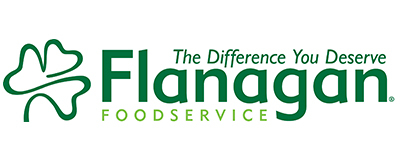
We collect basic website visitor information on this website and store it in cookies. We also utilize Google Analytics to track page view information to assist us in improving our website.

by Jane Auster
Whether you've closed your restaurant temporarily or converted to takeout, delivery or drive-thru only, the coronavirus offers an opportunity to do the kind of deep cleaning that makes regular spring-cleaning look like a light dusting.
"Cleaning is getting the visible; disinfecting is getting the invisible, the germs, the viruses," said cleaning expert Mark Mellish, owner of Saskatoon Janitorial, in an interview.
1. Think like Mr. Clean. It's not just about cleaning now, it's about sanitizing. That means sanitizing all work surfaces (i.e., countertops, equipment, etc.) and focusing on key touchpoints (tables, chairs, door handles, credit/debit machines, self-serve kiosks, light switches, utensils/plate ware...anywhere hands can carry germs). Back-of-house and front-of-house should both receive heightened attention.
2. Move the furniture. Don't just move tables aside, but disinfect them in the kitchen and move everything away from the area you are disinfecting to prevent chemical contamination.
3. Institute a cleaning schedule. Even without dine-in business and with fewer staff in place, you still need a rigorous cleaning schedule and checklist that you share with all employees. Hourly cleaning may sound excessive, but it will ensure your surfaces remain clean – and likely germ-free.
4. Read the labels. The fine print on cleaning products recommends how long to keep the disinfectants on the surface for them to be effective at killing germs. Also, make sure you're using the right product for the right job. Homemade mixtures with vinegar, for instance, have not been shown to be potent enough against COVID-19.
5. Don't forget your washrooms. While washrooms are removed from the kitchen and dining area, they, too, need extreme cleaning. That means toilets, stalls, hand dryers, toilet paper dispensers, sinks, waste bins, and any other people-facing equipment.
6. Mind your menus. If menus can be discarded, whether they're made of paper or plastic, replace them with new ones. If you have laminated menus and this isn't feasible, disinfect them carefully and "isolate" them from everyday use until it's safe to return to more normal operations. If you've converted to delivery and takeout, likely you're relying on online orders in any case.
7. Remember, the little things count. Deep, COVID-19 cleaning means taking into consideration even the smallest items, such as the salt and pepper shakers. Empty them before cleaning and allow them to air dry before refilling. Empty and thoroughly clean any other tabletop food containers, like ketchup, mustard and vinegar dispensers.
8. Give walls, curtains and blinds a thorough cleansing. COVID-19 is a respiratory virus and not considered to be a food-borne illness. To be on the safe side, clean vertical surfaces, which may carry air-borne pathogens.
9. Let your customers know. Use social media and signage in your front window to tell diners what steps you're taking to keep your operation clean. Use this as an opportunity to keep in touch and keep customers informed and loyal. They'll thank you for the care you're taking.
This post was shared in connection with Brand Points Plus, a FREE loyalty program for independent operators. Easily collect points for amazing rewards, if you're not a member - we highly recommend you become one.
Learn more about Brand Points Plus

